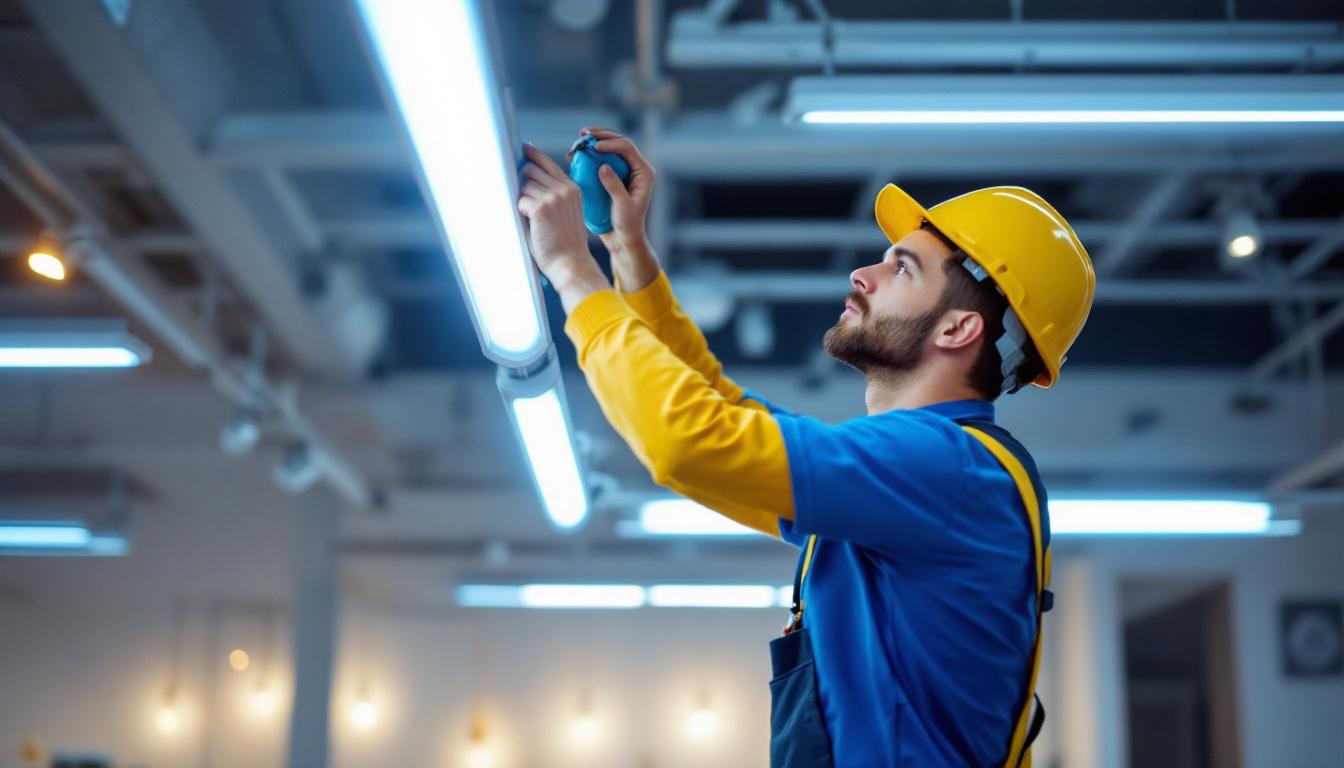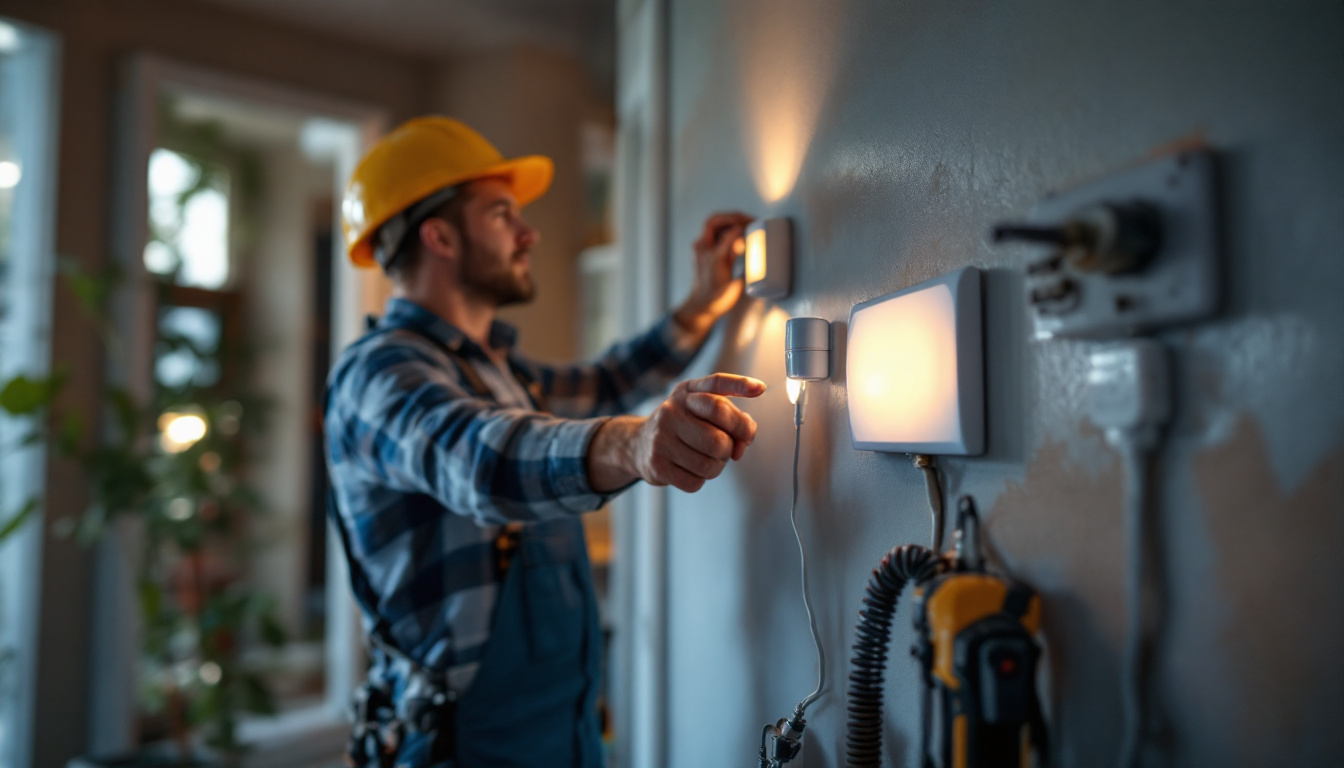
Fluorescent lighting has long been a staple in commercial, industrial, and institutional settings due to its energy efficiency and longevity compared to incandescent bulbs. However, the technology has evolved significantly, and modern fluorescent lights now offer a range of features and benefits that lighting contractors must understand to provide optimal solutions for their clients.
Unlike traditional fluorescent tubes, modern fluorescent lighting incorporates advanced phosphor coatings, improved ballast technology, and enhanced color rendering capabilities. These improvements not only increase the efficiency and lifespan of the fixtures but also improve the quality of light, making spaces more comfortable and productive.
For lighting contractors, keeping abreast of these technological advancements is crucial. It ensures that installations meet current standards and client expectations, while also maximizing energy savings and minimizing maintenance costs over time.
Additionally, the shift towards environmentally friendly practices has spurred innovations in fluorescent lighting. Newer models often utilize less hazardous materials and are designed to be more recyclable, addressing concerns about the environmental impact of traditional fluorescent lamps, which contain small amounts of mercury. This focus on sustainability not only aligns with global efforts to reduce waste and pollution but also appeals to clients who prioritize eco-friendly solutions in their projects.
Moreover, the integration of smart technology into fluorescent lighting systems is transforming how spaces are illuminated. Smart fluorescent lights can now be controlled remotely, allowing users to adjust brightness and color temperature according to their needs. This adaptability is particularly beneficial in settings such as schools and offices, where different activities may require varying lighting conditions. As these technologies continue to develop, lighting contractors will need to familiarize themselves with smart lighting systems to offer comprehensive solutions that enhance user experience and energy efficiency.
Fluorescent tubes come in various diameters and lengths, commonly referred to by their T-number (e.g., T8, T5). The T-number indicates the tube’s diameter in eighths of an inch, with T5 tubes being slimmer and more efficient than the older T12 models. Lighting contractors should prioritize T8 and T5 tubes for new installations or retrofits, as they offer better energy efficiency and improved light output. The choice of tube length is also crucial, as standard lengths include 2-foot, 4-foot, and 8-foot options, allowing for flexibility in various applications. For instance, 4-foot tubes are often the go-to choice for office spaces, providing ample illumination without excessive bulk.
Additionally, the choice between linear and compact fluorescent lamps (CFLs) depends on the application. Linear tubes are ideal for large, open areas like warehouses and offices, while CFLs are better suited for smaller fixtures and residential settings. It’s also worth noting that the color temperature of fluorescent tubes can significantly affect the ambiance of a space. Ranging from warm white to cool daylight, selecting the right color temperature can enhance productivity in work environments or create a cozy atmosphere in homes. Therefore, understanding the specific needs of the space is essential for making an informed decision.
Ballasts regulate the current to the fluorescent tube and are critical for proper operation. Modern electronic ballasts have largely replaced magnetic ballasts due to their higher efficiency, reduced flicker, and quieter operation. Electronic ballasts can improve energy savings by up to 30% compared to magnetic counterparts. Furthermore, they often come equipped with advanced features such as programmable settings and the ability to operate multiple tubes, making them a versatile choice for various lighting scenarios.
When selecting ballasts, lighting contractors must ensure compatibility with the chosen tube type and consider factors such as dimming capability and power factor correction. High-quality ballasts also contribute to longer fixture life and better overall performance. It’s important to note that some electronic ballasts are designed to work with specific tube types, so verifying compatibility is essential to avoid flickering or premature burnout. Additionally, the installation of smart ballasts can allow for integration with building management systems, enabling energy monitoring and automated control, which can lead to further energy savings and enhanced operational efficiency. As such, investing time in selecting the right ballast can yield significant long-term benefits for both energy consumption and lighting quality.
Correct wiring is fundamental to the safe and efficient operation of fluorescent lighting systems. Contractors should follow the National Electrical Code (NEC) and local regulations meticulously. This includes using the proper gauge wire, ensuring secure connections, and installing appropriate protective devices such as fuses or circuit breakers.
Additionally, grounding the fixtures correctly helps prevent electrical hazards and improves system reliability. Lighting contractors must also verify that ballasts and tubes are installed according to manufacturer specifications to avoid premature failure. Regular inspections and maintenance of wiring can further enhance safety, ensuring that any wear or damage is promptly addressed. Furthermore, using high-quality materials and components not only boosts performance but also extends the lifespan of the lighting system, ultimately leading to lower long-term costs for the end user.
The arrangement of fluorescent fixtures significantly impacts energy consumption and lighting quality. Contractors should design layouts that minimize overlap and shadowing while providing uniform illumination. Using reflective surfaces and diffusers can enhance light distribution and reduce the number of fixtures required.
Incorporating occupancy sensors and daylight harvesting controls can further optimize energy use. These technologies adjust lighting levels based on room occupancy and available natural light, reducing unnecessary power consumption. Moreover, it is beneficial to conduct a thorough analysis of the space before installation, taking into account factors such as wall colors, furniture placement, and the intended use of the area. By tailoring the lighting design to the specific needs of the environment, contractors can create a more comfortable and productive atmosphere while maximizing energy savings. Additionally, educating clients on the benefits of energy-efficient lighting solutions can foster a greater appreciation for sustainable practices and encourage future investments in energy-saving technologies.
Regular maintenance is essential to sustain the performance of fluorescent lighting systems. Dust and dirt accumulation on tubes and fixtures can reduce light output by up to 30%, so contractors should advise clients on scheduled cleaning routines. This maintenance not only enhances light quality but also contributes to the overall aesthetic appeal of the space, ensuring that environments remain welcoming and functional.
Inspecting tubes for signs of wear, such as flickering or darkened ends, allows for timely replacements before complete failure occurs. Similarly, ballasts should be checked for overheating or unusual noises, which may indicate impending issues. Additionally, keeping an eye on the wiring and connections can prevent electrical hazards and ensure that the fixtures operate safely and efficiently. Regular inspections can also reveal potential upgrades or modifications that could further enhance the lighting system, making it a proactive approach to facility management.
While fluorescent lighting remains relevant, many clients are transitioning to hybrid or LED lighting systems for even greater efficiency and longevity. Lighting contractors should be prepared to offer retrofit options that replace fluorescent tubes with LED equivalents compatible with existing ballasts or fixtures. The transition to LED technology not only meets the demand for energy efficiency but also aligns with growing environmental concerns, as LED lights are known for their lower carbon footprint compared to traditional lighting solutions.
These upgrades can reduce energy consumption by up to 50% and lower maintenance costs due to the extended lifespan of LED lamps. Understanding the nuances of these technologies allows contractors to provide informed recommendations tailored to client needs and budgets. Furthermore, the versatility of LED lighting, which includes options for color temperature and dimming capabilities, enables clients to create customizable lighting environments that enhance productivity and comfort in their spaces. As the market for smart lighting solutions expands, contractors should also explore integrating smart controls and automation, which can further optimize energy use and improve user experience.
Fluorescent tubes contain small amounts of mercury, a hazardous material that requires careful handling during disposal. Lighting contractors must be knowledgeable about local regulations regarding the collection, transportation, and recycling of spent tubes to ensure environmental compliance.
Partnering with certified recycling facilities helps prevent mercury contamination and supports sustainable practices. Educating clients about proper disposal methods also reinforces a contractor’s commitment to environmental responsibility.
Modern building codes increasingly emphasize energy efficiency and environmental impact. Fluorescent lighting installations must comply with standards such as ASHRAE 90.1 and Title 24, which set minimum efficiency requirements and encourage the use of advanced lighting controls.
Lighting contractors should stay informed about evolving regulations to avoid costly rework and to position themselves as trusted experts in energy-efficient lighting solutions. Incorporating compliance considerations early in the design and installation process ensures seamless project delivery.
Lighting contractors who take the time to educate clients about the benefits and limitations of modern fluorescent lighting build stronger, trust-based relationships. Providing clear explanations about energy savings, maintenance requirements, and environmental impact empowers clients to make informed decisions.
Offering ongoing maintenance contracts and timely support services further distinguishes contractors in a competitive market. Demonstrating expertise and reliability not only leads to repeat business but also generates positive referrals and long-term partnerships.
Modern fluorescent lighting presents a valuable opportunity for lighting contractors to deliver efficient, cost-effective, and environmentally responsible solutions. By understanding the latest technologies, adhering to best installation and maintenance practices, and navigating regulatory requirements, contractors can enhance their service offerings and meet the evolving demands of their clients.
Staying current with industry trends and continuously refining skills ensures that lighting contractors remain indispensable partners in creating well-lit, energy-efficient environments across diverse applications.
Ready to elevate your lighting projects with the latest in fluorescent technology? At LumenWholesale, we provide lighting contractors like you with the highest quality, spec-grade lighting products at prices that can’t be beaten. Say goodbye to local distributor markups and hello to a vast selection of reliable, high-performance lighting that meets the most stringent industry standards. With the added benefits of hassle-free bulk buying and free shipping, you can ensure every project shines brightly while keeping costs low. Don’t compromise on quality or value—discover wholesale lighting at the best value today and make LumenWholesale your go-to source for all your lighting needs.

Explore the advantages and drawbacks of light and fan switches in this insightful guide tailored for lighting contractors.

Discover essential tips and best practices for lighting contractors on installing light fixture mounting plates.

Discover the frequent pitfalls lighting contractors encounter with motion sensors and switches.

Explore the transformative impact of four-foot LED lights in contemporary lighting solutions.